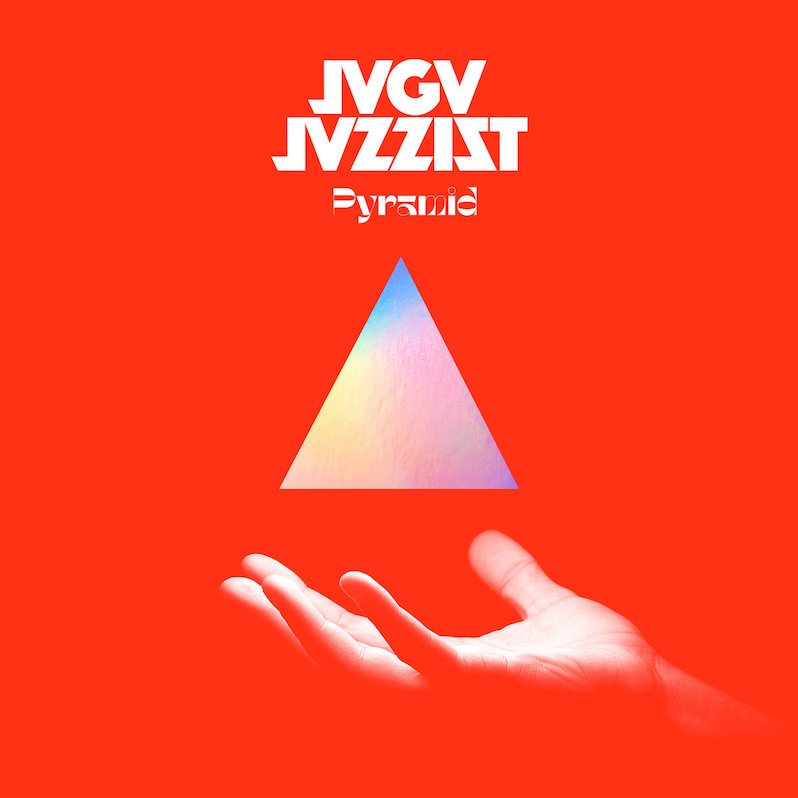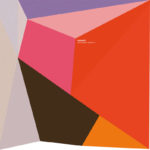Jaga Jazzist : Pyramid

Jaga Jazzist had a very strange brush with fame. In their native Norway, they are rockstars, being a fundamental institution since the mid-’90s which have also been the birthing grounds for such talents as Jorgen Munkeby, later of fusion/prog/blackjazz/hard rock group Shining. But their fame in their home doesn’t stop there; the Horntveth brothers, the founders and figureheads of Jaga Jazzist, are also members of the pop-rock institution The National Bank, a supergroup of some acclaim in Norway. Despite this, the group seems to have only barely scratched into the public consciousness in Britain and the U.S. with their 2010 record One-Armed Bandit, a record which paradoxically received their lowest scores from American reviewers in their career yet seems to be the only record most over here could name by the group. (The esteem of this record would rise over the intervening decade, eventually landing on many critics’ and publications’ decade-end list; the group seems to be more of a grower than a shower.)
To the band’s credit, this brief brush seems not to have phased them, having kept up their five-year album cycles since 2005’s What We Must. Pyramid continues the most satisfying element for long-time fans of the band, that being their continually-evolving sonic palette. Starfire, their previous record, expanded on the progressive rock influence on One-Armed Bandit by leaning harder into the Moog-driven tonalities of the genre, the band having incorporated the tricksy figures one might anticipate in the genre long ago due to their long-standing commitment to jazz-fusion. Pyramid expands on this push into the fields of progressive rock, built exclusively from four long cuts in a move that will be no surprise to longtime fans of the genre. Interestingly, while each of the four play in the world of progressive rock, only the middle two feel strongly situated within that space. Those two tracks feel the most at home next to their work on the preceding record Starfire, with rich and complex musical beds filled out by the veritable battalion of players Jaga Jazzist has at their disposal while the increasingly-central synthesizer takes center stage. Meanwhile, the two bookending tracks feature a wider stylistic divergence for the group. The first track, and lengthiest by far at a whopping 13 minutes, is a symphonic jazz-fusion number that wouldn’t be out of place on a Kamasi Washington LP. The final track, meanwhile, lives within the world of trance with light techno elements, where jazz acts more as a flourish across the body to give it flavor rather than the primary element. In each of those bookending tracks, prog is present but is more activated by modality, the way the group explores the lengthy expanse they set out for themselves, rather than Yes-styled filigree or Genesis-derived symphonic Mellotron beds.
But perhaps the most interesting aspect of the record is a large-scale return to the textures of ambient music found most prominently on What We Must. For the past 15 years and across two LPs, the group was more interested in active-tense figures, with cresting intensities and the occasional wild solo. Not so on Pyramid. This is not to say that proceedings are uneventful or unpleasurable; not by a long shot. But the frame is certainly shifted toward tapestry over showboating, each element of their army of players pointed toward the overall extended span of the material rather than clambering for busy note-heavy soloing. The solos that do appear are more considered, muted. The approach is more Matthias Eick than Dizzy Gillespie, focused primarily on richness and texture. The interlocking of this many high-level players all sensitively attuned to the broader arc of the song beneath leads to a fascinating dense style of ambient jazz, one replete with layer after layer of lines and melodic concepts that stitch together into a vibrant and strangely spacious whole.
They are able to achieve this largely by having a dynamic arc to the songs that allows for peaks of more explicitly catching melodies. Take the opening figures of “Spiral Era”, the lead single and second track. There is a distinctly Radiohead-like approach to the drum-and-guitar shuffle which takes the lead early on, specifically evoking the R&B-influenced rock ideas that group were exploring on Hail to the Thief and In Rainbows. This establishment, pushed right up front so it grabs you by the shirt, is allowed to gently recede into the background while other instruments cloud up the space around it. In lesser hands, this would muddy the intent of the track, burying the exciting hook in a frustrating set of obscuring and overlapping lines and figures. The decades of ensemble work with Jaga Jazzist shine through, however, in how trusting they are that the right obscuring elements brought in at the right time will let that central melody sit in the back of your head. It’s their version of the standard mode of jazz, where you establish a head melody and every improvised solo after is an abstracted recontextualization of that central figure, but here applied to the worlds of prog, electronica, ambient music and post-rock.
It’s a fascinating listen. The approach to their instruments and deftness of the production (a subtle highlight of the record, every element burbling up and receding back down in perfect synchrony) means you can never quite tell what’s a solo and what’s a composed figure, what unison was achieved through overdubs following an improvisation and which were predetermined. To a jazz purist, this must be infuriating; the group clearly feels no sense of obligation to uphold the shape of jazz as it was. But it is also what makes Jaga Jazzist feel so profoundly modern in their approach to jazz, as willing to play in nu-jazz electronic modes as they are to evoke the eerie synthesized landscapes of The Lamb Lies Down on Broadway. It’s the kind of approach that can only come when you have absolute faith in your virtuosic capacity such that you no longer feel any need to show it off. Everything can be pointed toward the song, toward the broader tapestry, mood and texture. This is precisely the same kind of mindset that made Sade such profound legends; those players could shred, but never needed to, instead using all that profound technical ability to play as gracefully and thoughtfully as possible, every note in precisely the perfect spot. Jaga Jazzist are certainly more abstract than Sade, but that same sense of deliberateness and placement shines through on Pyramid, even despite the obvious length of these four tracks.
One hopes that, with the rise of jazz figures like The Comet Is Coming, Kamasi Washington, Sons of Kemet and Kamaal WIlliams, that Jaga Jazzist finds a more permanent place in the hearts and minds of western audiences. Pyramid certainly proves their continued worth, being just as ineffably impossible to rank against their previous records in a which-is-best approach as any other. The group changes both too much and just enough, their work feeling often more like a holocratic expansion of the shifting interests of the group as much as they elaborate on a singular central ideal. Their albums in general feel non-competitive with one another not because they don’t seek to be the best and more that they are comfortable living in unity with one another. Pyramid‘s expansions of Starfire‘s approach to prog-drenched jazz-fusion by linking it to their earlier explorations of ambient, soundscape and film score textures offers an intriguingly self-referential turn to this modern phase of their career. It may lack the astonishment of the suddenly opening door of One-Armed Bandit‘s burst into public consciousness, but Pyramid feels like the warmest invitation to explore their catalog. It is an encyclopedia, a map, a mural. Maybe, ultimately, that does make it their best.
Label: Brainfeeder
Year: 2020
Similar Albums:
 Elephant9 – Psychedelic Backfire I and II
Elephant9 – Psychedelic Backfire I and II
 The Cinematic Orchestra – To Believe
The Cinematic Orchestra – To Believe
 Tortoise – The Catastrophist
Tortoise – The Catastrophist
Langdon Hickman is listening to progressive rock and death metal. He currently resides in Virginia with his partner and their two pets.


Nice write up. Each album definitely covers new territory and takes some listens to absorb all the ideas, this one is no different. As usual the delivery is superb and musicianship inspiring. Looking forward to additional listens